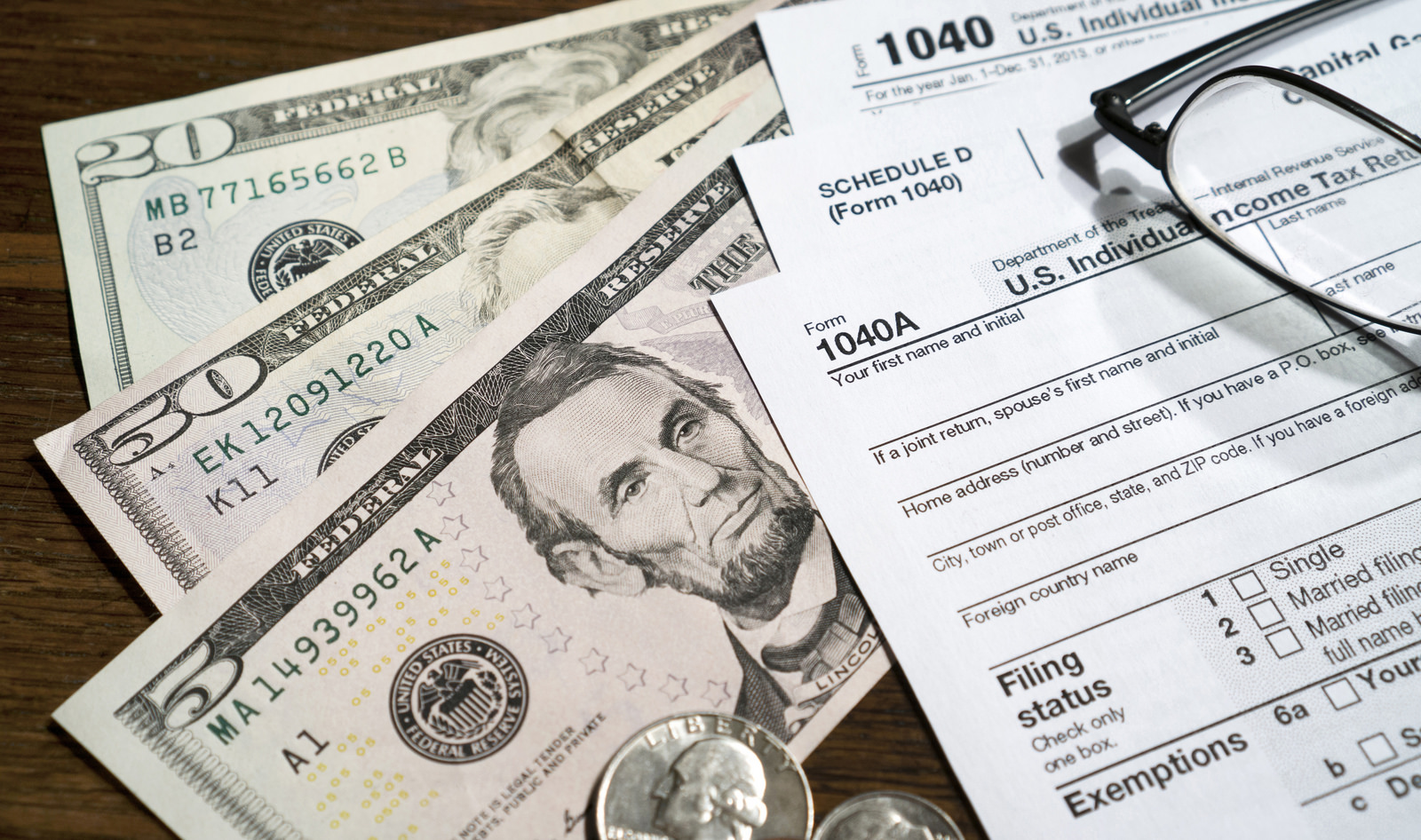Just as a refresher, W-2 income is generally the payment type when you are an employee while 1099 is the payment type when you are an independent contractor. The fundamental difference between receiving 1099 income and W-2 income in the purview of the federal government is the distinction between being employed or self-employed. There are some major differences in tax calculations and how taxes are paid, which I plan to discuss in the rest of this post.
This photo, “Taxes” is copyright (c) 2014 Pictures of Money and made available under a Attribution 2.0 Generic License
W-2 income
Most people are familiar with W-2 income. At the end of the year you will receive a W-2 tax form, which is a summary of your salary, taxation, and deductions for the year. If you look at your pay stubs during the year, you will notice that there are already withholdings for federal taxes, Social Security taxes, and Medicare taxes. The total Medicare tax is 2.9%. However, this is split between you and your employer equally, so you are responsible for half of this, or 1.45%. Similarly, Social Security tax totals 12.4%, of which you are responsible for half, or 6.2%. These are automatically taken out of your paycheck for W-2 employees. If you live in a state or city that has additional income tax, then this will also be automatically withheld. You probably have additional deductions including retirement accounts, health insurance, vision insurance, and commuter services that will show up on your pay stubs as well. The W-2 form basically sums all of these up at the end of the year.
1099 income
This is the usual payment type for an independent contractor, and is likely the type of payment you will receive as a moonlighter. The difference between this and W-2 income is that you are paid the entire gross amount of your pay rate. For instance, let's say your paycheck is $1,500 and you are receiving it as W-2 income. When this shows up on your paycheck, you may only end up with a take-home pay of $1,100, after all taxes and deductions are taken out. However, when you receive this as 1099 income, the entire $1,500 is given to you as a lump sum. It feels great getting that large lump sum into your bank account all at once, however you are solely responsible for a sure that you pay for all the applicable taxes from this income.
What taxes do you owe with 1099 income?
You are responsible for the same taxes that you would with W-2 income, however you are additionally responsible for the employer part of taxes. What do these include? Well remember in the W-2 section we talked about the employee and the employer splitting the Medicare and Social Security wages. With 1099 income, you are responsible for the entire amount. When you file taxes at the end of the year, this will show up as a "Self-Employment Tax" equal to 15.3% of your net 1099 income. This is basically summing up 12.4% for Social Security tax and 2.9% for Medicare tax.
I know what you are thinking:
"I get taxed more on self-employed income?"
Yes, you do. However there some other benefits to having 1099 income which I will discuss in another post. For now, keep reading to learn what you need to do to avoid penalties for underpaying taxes on 1099 income.
How to pay for taxes when you have 1099 income
Remember that taxes are a pay-as-you-go system, and so you are expected to pay estimated taxes along the way. This is a quarterly filing that you complete around mid-April, mid-June, mid-September, and mid-January for a given tax year. There is a worksheet called the 1040-ES that helps you estimate this amount. If you underpay by too much, then you are subject to an underpayment penalty. Similar rules usually apply for state and local taxes, for which there are too many out there to discuss here. You should read the requirements for your specific state and city and be sure to abide by them. The amount I moonlight is subject to a lot of variability and so I cannot always accurately estimate how much income I will be receiving. If you are in a similar position, then it is important to remember the safe harbor rules in order to avoid the underpayment penalty. This is generally what I aim for, and I will save extra money if I expect to owe more taxes when I file later on.
Extra withholdings if you have W-2 income and 1099 income
If you happen have W-2 income and 1099 income, then you have the option to increase the federal tax withholdings on your W-2 income in order to account for the taxes that you would owe on your 1099 income. You can either decrease your allowances on your W-4 form, or you can specify additional withholdings on each paycheck. By doing this, you may avoid having to file and pay estimated taxes quarterly. This is generally what I do. I feel really poor when my regular paycheck comes, but each 1099 income paycheck is like an extra bonus because I have already accounted for the taxes on it!
Read more on why I choose to have 1099 income over W-2 income! Please leave a comment below.


